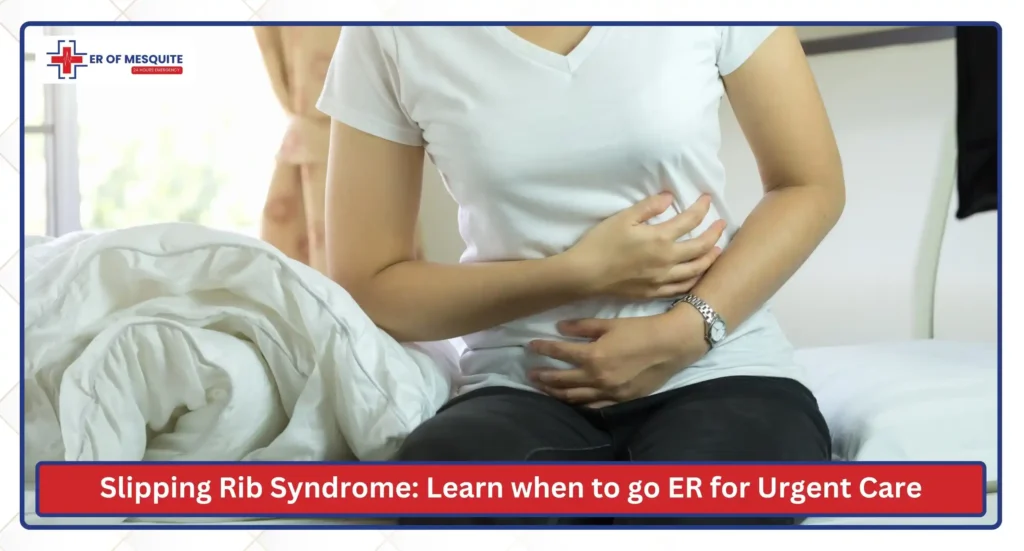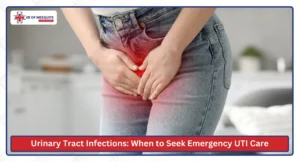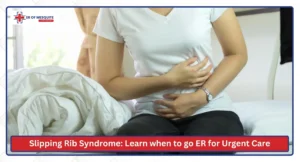Slipping rib syndrome (SRS) is caused due to chest and rib pain that occurs when the costal cartilage becomes loose or partially detached. This can result in a rib out of place, sharp or dull pain, and sometimes a popping sensation.
It is important to take early prevention, as discomfort can mimic heart problems, costochondritis, or other abdominal issues.
At the ER of Mesquite, our emergency specialists provide fast diagnosis, imaging, and treatment for rib-related pain, ensuring patients get relief while ruling out serious conditions.
Let’s dive deep and learn more about slipping rib syndrome, along with a brief guide on when to take emergency care treatment near you at the ER of Mesquite.Slipping Rib Syndrome vs. Costochondritis
Slipping Rib Syndrome vs. Costochondritis
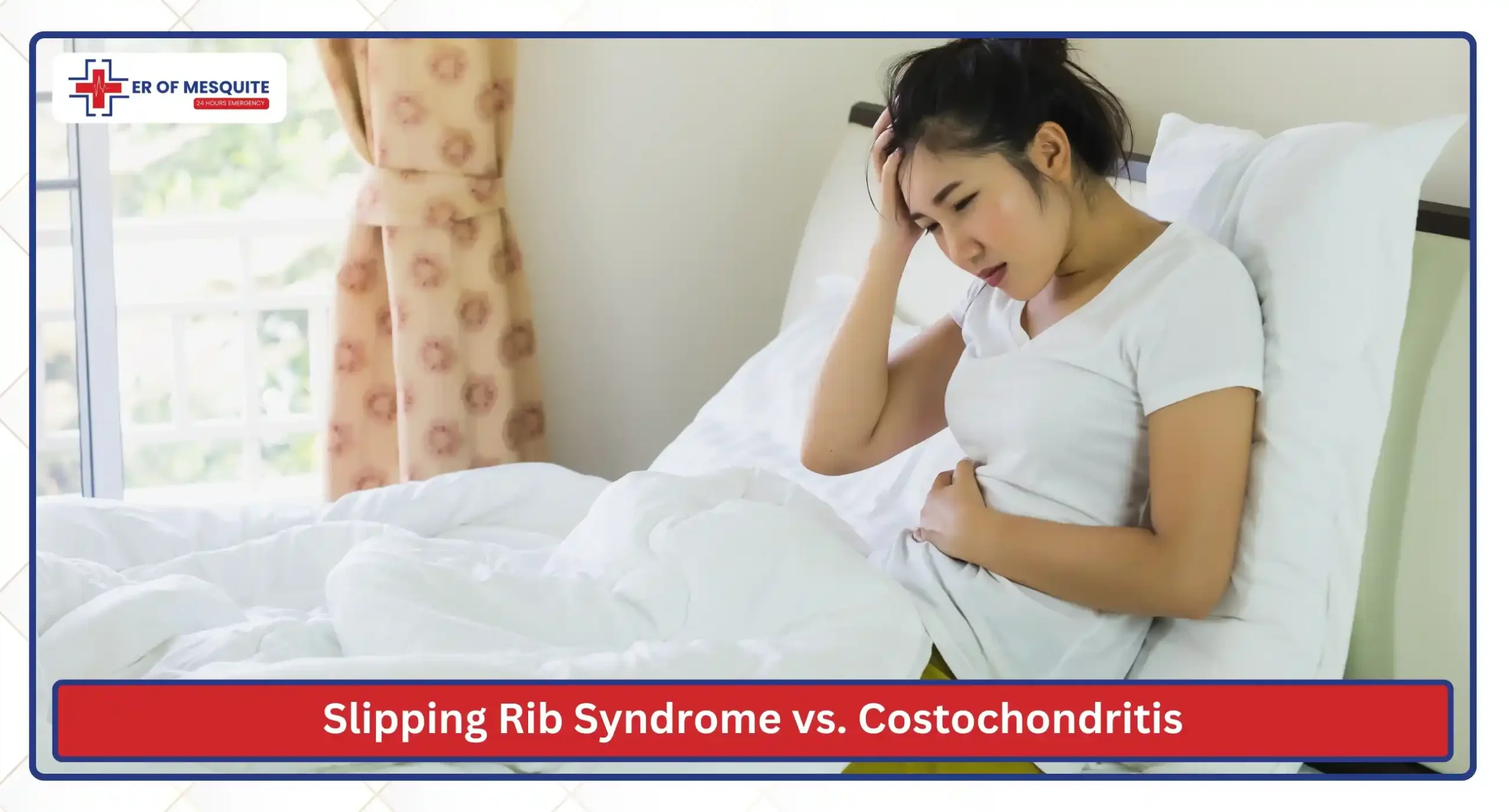
The table below illustrates the main differences between slipping rib syndrome and costochondritis.
| Aspect | Slipping Rib Syndrome (SRS) | Costochondritis |
| Main Cause | Issues in the costal cartilage causing rib subluxation or a “rib out of place” | Inflammation of the costochondral junctions |
| Pain Location | Lower rib cage or side of chest; can radiate to the back or the upper abdomen | Central chest, near the breastbone (costochondritis pain locations) |
| Pain Type | Sharp, stabbing, or popping sensation when moving or breathing | Dull, aching, or pressure-like pain worsened by touch or deep breathing |
| Affected Ribs | 8th–10th ribs (false ribs) | 2nd–5th ribs (true ribs) |
| Treatment Options | Rest, bracing, physical therapy, bone stimulator, or nerve block | Anti-inflammatory medications, heat therapy, posture correction |
| When to Visit the ER | Sharp chest pain, breathing difficulty, or post-trauma rib pain | Persistent chest pain, especially if mimicking cardiac symptoms |
How Is Slipping Rib Syndrome Diagnosed?
Diagnosis begins with a detailed history and physical examination. A clinician may perform the hooking manoeuvre, a technique where they gently lift under the rib margin to reproduce the pain or clicking sensation typical of rib subluxation.
It can also be diagnosed with detailed imaging services, such as an emergency digital X-ray service. To visualize cartilage movement, physicians may also perform a comprehensive ultrasound or an urgent CT scan.
At ER of Mesquite, we closely observe whether it’s a bone bruise, soft tissue injury, or nerve irritation. If you’re wondering how to tell if a bone is fractured or bruised, diagnostic imaging provides the correct answer.
Symptoms of Slipping Rib Syndrome
Slipping rib syndrome (SRS) often causes sudden, sharp pain that can feel like a rib out of place. It happens due to loosening of the costal cartilage; even small movements can trigger discomfort.
Common symptoms include:
- Sharp, stabbing pain in the lower ribs
- A clicking or popping feeling when moving or twisting
- Tenderness over the affected rib
- Pain that spreads to the back or side
- Discomfort with deep breaths or coughing
- Dull aching pain after sharp pain episodes
- Pain similar to costochondritis
- Worsening pain when bending, lifting, or reaching overhead
Treatment Options
| Treatment Options | Description |
| Rest | Avoid twisting, lifting, or movements that worsen pain. |
| Pain Relief | Doctor prescribed anti-inflammatories to reduce discomfort. |
| Cold or Heat Therapy | Apply ice or heat to the affected costal cartilage or rib area. |
| Physical Therapy | Strengthen core muscles and improve posture. |
| Bracing or Taping | Support ribs and prevent excessive movement. |
| Bone Stimulator | Promote healing in cases of minor fractures. |
At ER of Mesquite, we offer reliable urgent chest pain treatment under the supervision of board-certified healthcare professionals.
Can Slipping Rib Syndrome Be Prevented?
Slipping rib syndrome can appear from trauma or natural cartilage weakness; several preventive measures can minimise the risk. The key lies in protecting the costal cartilage and keeping your rib cage stable and properly aligned.
For people diagnosed with previous chest injuries, with the help of protective gear, taking breaks during high-impact activities can help prevent both slipping rib syndrome and related conditions, such as costochondritis.
Maintaining a good body posture and avoiding poor sitting positions reduces the chances of a rib being out of place. Along with physical strength, it is also important to have a balanced and healthy diet. Taking nutritious food on time helps prevent bone weakening.
When to Visit the ER
Seek emergency care at the ER of Mesquite if you experience:
- Sudden or severe chest or rib pain
- A rib out of place with pain during breathing or movement
- Difficulty breathing or shortness of breath
- Pain after injury or trauma to the chest or ribs
- Swelling, redness, or bruising over the rib area
- Persistent or worsening pain
Why Choose ER of Mesquite for Rib and Chest Pain?
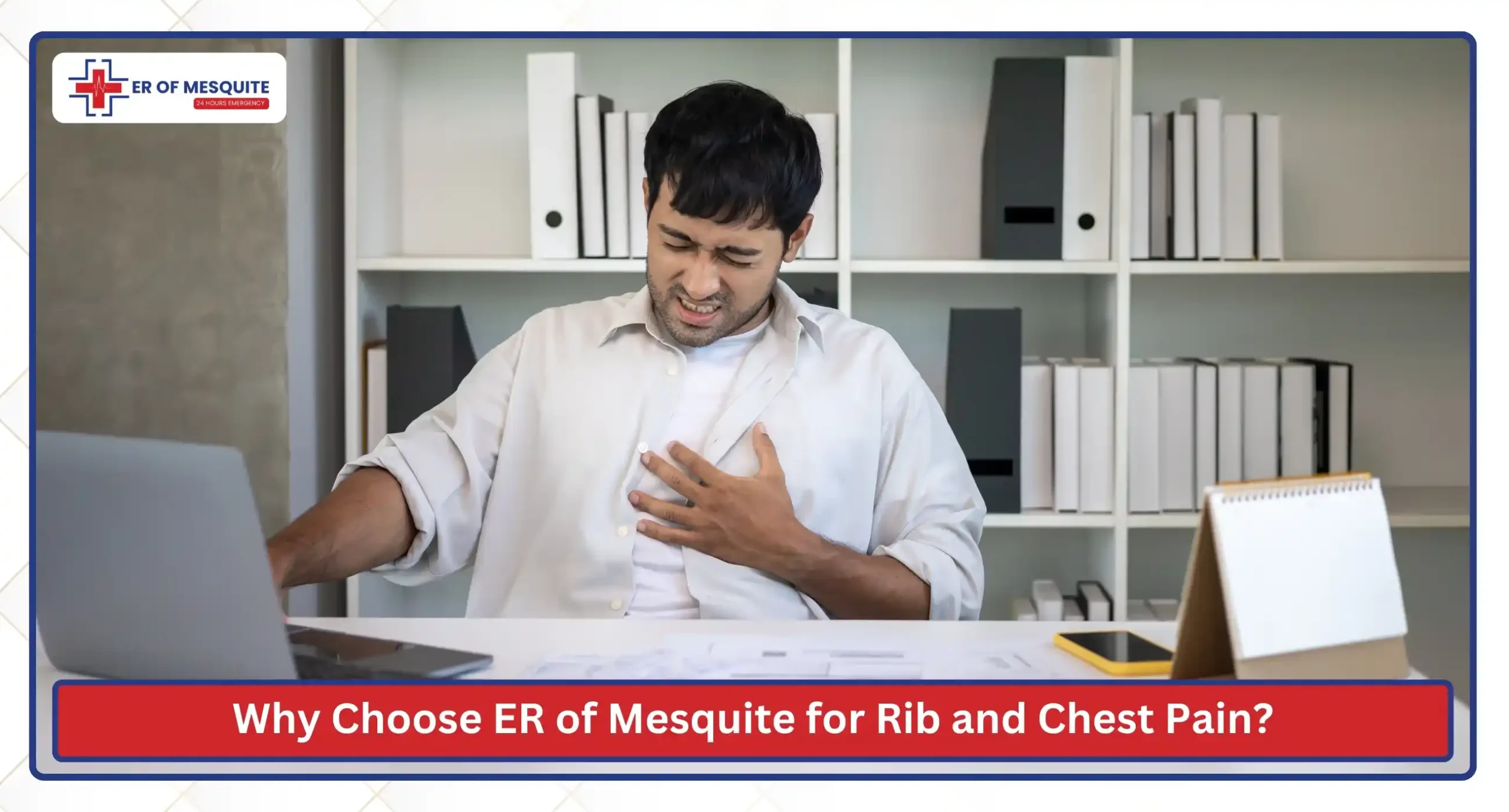
When every second counts, the ER of Mesquite delivers fast, expert, and compassionate emergency care service.
We offer:
- Board-certified emergency physicians
- Immediate imaging and results
- Advanced pain management
- Private, comfortable treatment rooms
ER of Mesquite also provides specialized pediatric care for children experiencing rib pain or chest injuries, ensuring fast, safe, and compassionate treatment for young patients.
Finding Relief and Knowing When to Seek Help
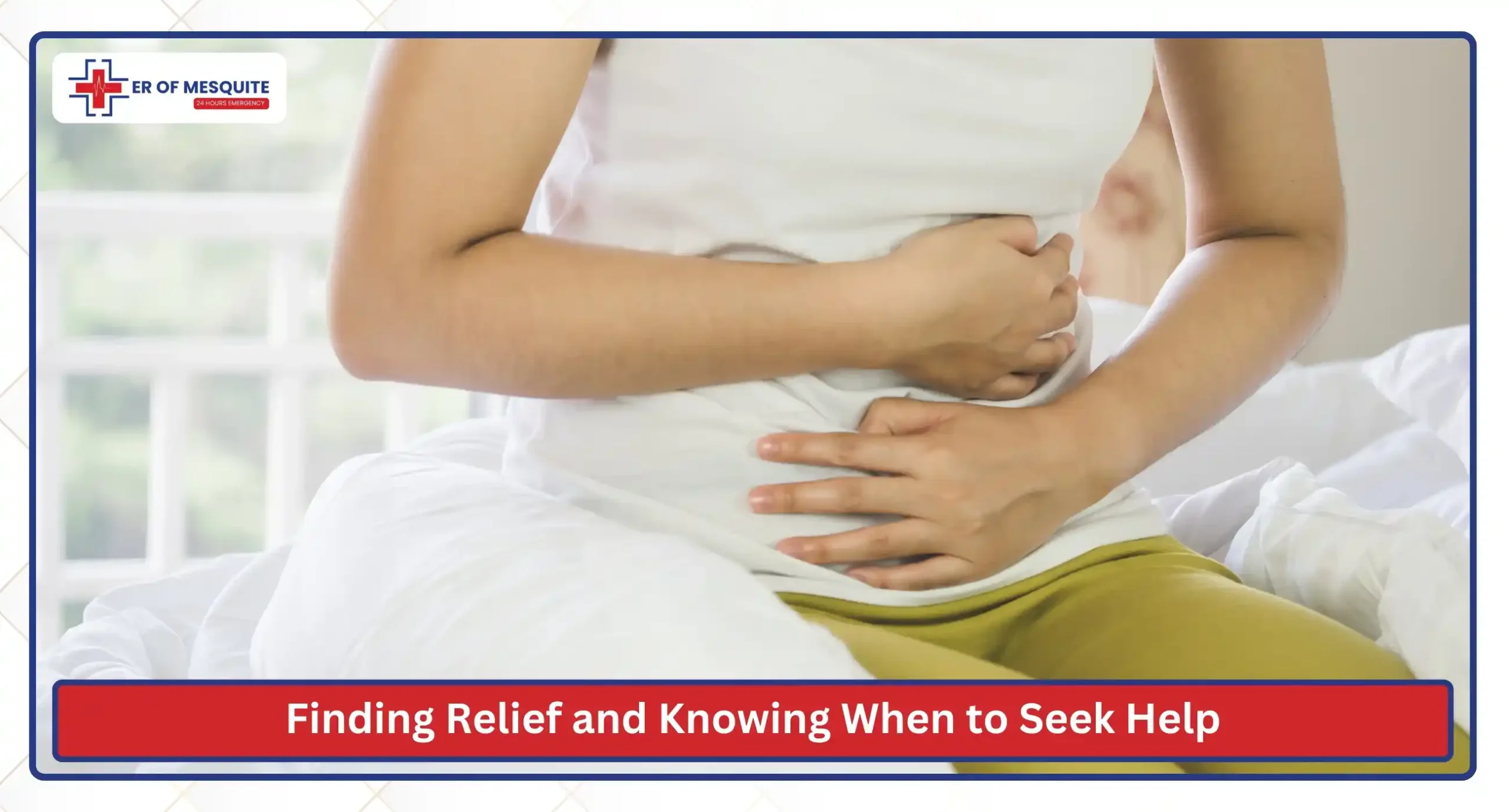
In a nutshell, slipping rib syndrome is not life-threatening, but the discomfort can affect daily activities and make it hard to breathe or move comfortably. Since it causes sharp or persistent pain that’s often mistaken for chest or abdominal conditions, it is important to identify it early for speedy recovery and the right treatment.
If you experience chest or rib pain, it’s best to seek urgent medical evaluation to rule out serious issues. The ER of Mesquite provides prompt, professional care to help patients find relief and get back to feeling their best.

